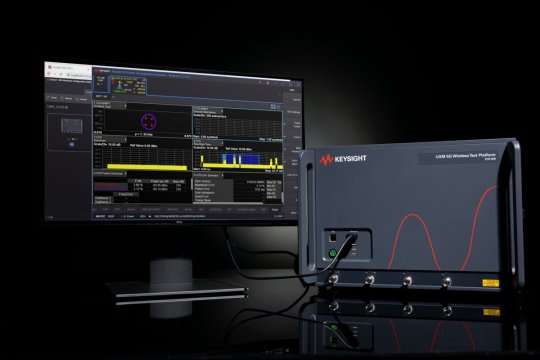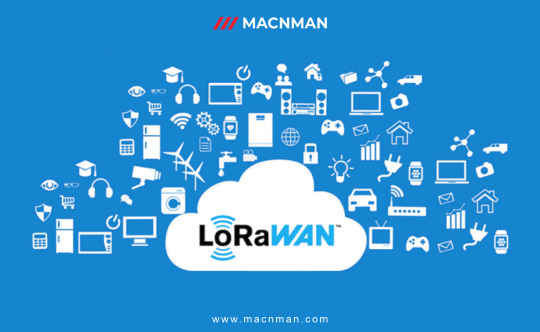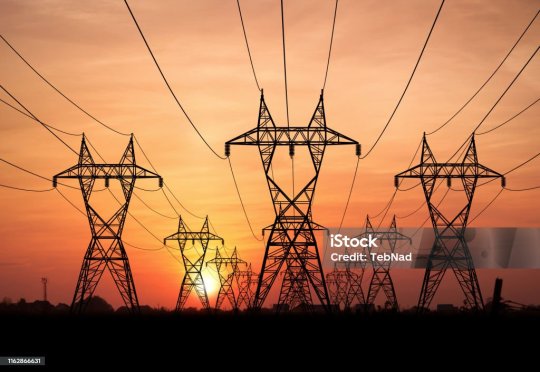#Narrowband IoT
Text
Keysight Launches E7515R Solution for CIoT Technologies, Including 5G RedCap
Keysight Technologies, a leading technology company, has launched a wireless test platform designed specifically for all cellular internet of things (CIoT) technologies, including the 5G RedCap specification. The E7515R solution is a network emulation platform that provides chipset, device, and module makers with streamlined capabilities for RedCap without the additional features needed to test a…

View On WordPress
#5G New Radio#5G RedCap#chipset#CIoT#device#E7515R#functional#Keysight Technologies#lab validation#LTE Cat-1bis#LTE Category M#Mobile World Congress 2023#module makers#Narrowband IoT#next generation#performance testing#protocol#return on investment#RF#wireless test platform
0 notes
Link
1 note
·
View note
Text
studying engineering and being a fan of our flag means death is so hard and i bet you never thought you would hear that
but listen
is it Orthogonal Frequency Division Multiplexing or Our Flag Means Death?
i will never know bc i keep mixing up ofmd and ofdm 😭😭😭
#no bc i was literally just studying and i said ofmd instead of ofdm#like yeah cyclic prefix ofmd for massive iot let's go#but no#also i will NEVER call nb iot narrowband iot#it will always be nonbinary iot i don't care#our flag means death#ofmd
5 notes
·
View notes
Text
Narrowband IoT (NB-IoT) Chipset Market Size, Share, Industry Report & Trend Analysis
0 notes
Text
Global Narrowband IoT (NB-IoT) Market - WishTree Insight
Global Narrowband IoT (NB-IoT) Market - Market Size, Share & Industry Trends, Growth Analysis Report by Product Type, By Consumption and Forecast 2022 – 2032. Narrowband IoT (NB-IoT) is a low-power wide-area network (LPWAN) technology that is specifically designed for Internet of Things (IoT) devices and applications.
For more details visit:
https://wishtreeinsight.com/reports-details/global-narrowband-iot-nb-iot-market-wishtree-insight
0 notes
Text
Narrowband IoT Chipset Market 2022 Size, Share, Upcoming Industry Trends, Business Development Analysis, Segmentation and Forecast by 2028
Narrowband IoT Chipset Market 2022 Size, Share, Upcoming Industry Trends, Business Development Analysis, Segmentation and Forecast by 2028
This report studies the Narrowband IoT Chipset Market with many aspects of the industry like the market size, market status, market trends and forecast, the report also provides brief information of the competitors and the specific growth opportunities with key market drivers. Find the complete Narrowband IoT Chipset Market analysis segmented by companies, region, type and applications in the…
View On WordPress
#Covid-19 Impact Analysis#Narrowband IoT Chipset#Narrowband IoT Chipset forecast#Narrowband IoT Chipset Industry#Narrowband IoT Chipset Market#Narrowband IoT Chipset price#Narrowband IoT Chipset report#Narrowband IoT Chipset research#Narrowband IoT Chipset share#Narrowband IoT Chipset trends
0 notes
Video
Narrowband Internet of Things (IoT) chipset is a low power WAN radio technology which is used for the cellular devices and the services. The particularization is frozen in 3GPP. Narrowband Internet of Things (IoT) chipse aims particularly on the coverage of indoor activities, low cost huge connection density and an enduring battery life. Narrowband Internet of Things (IoT) chipse uses an alternate of the LTE Standard however, restricts the bandwidth to the single narrow band of the 200 kHz. It utilizes OFDM change for the downlink interaction and for the upcoming interaction. IoT applications that need frequent interaction is better served by the Narrowband Internet of Things (IoT) chipse.
0 notes
Text
What is the difference between LoRa and LoRaWAN?
Introduction:
LoRaWAN serves as the communication protocol connecting the LoRa signal (which carries sensor data) to the respective application(s). To simplify, think of LoRa as the radio signal transporting the data, while LoRaWAN acts as the governing framework that dictates how this data travels and communicates within the network.

What is LoRa?
LoRa, short for Long Range, is a wireless technology known for its extended range and energy-efficient characteristics. It operates within unlicensed wireless frequencies, similar to how Wi-Fi utilizes the unregulated 2.4 GHz and 5 GHz bands. The specific frequency employed by LoRa varies depending on the geographic location of the deployment. For instance, in North America, LoRa operates in the 915 MHz band, while in Europe, it utilizes the 868 MHz band and in India it is 865 MHz to 867 MHz.
It is crucial to be aware of the legally permitted frequencies for LoRa deployments in each respective location. In terms of its communication range, LoRa can transmit data up to a distance of 10 kilometers in ideal conditions with a clear line of sight.
Low Power Wide Area (LPWA) technology can be categorized into two main types. On one hand, there's cellular LPWA, which utilizes mobile networks. Examples of cellular LPWA technologies include Narrowband IoT (NB-IoT) and Long Term Machine Type Communications (LTE-M). On the other hand, there's non-cellular LPWA like LoRa, which disseminates data by dividing it into encoded packets and transmitting them across various frequency channels and data rates.
What is LoRaWAN?
LoRaWAN is a network protocol that serves as the bridge between the LoRa signal, which carries sensor data, and the applications that use this data. In simpler terms, LoRa represents the radio signal responsible for transmitting the data, while LoRaWAN is the communication protocol that manages and defines how this data is transmitted across the network.
LoRaWAN offers several valuable advantages, including low power consumption, extensive coverage range, and cost-effective connectivity for devices that don't require high data transfer speeds. It's an excellent choice when cellular connectivity is too expensive or Wi-Fi coverage is unavailable. Some of the most compelling use cases for LoRaWAN include:
Agriculture: LoRaWAN's long-range capabilities provide reliable connectivity for rural applications where high data transfer rates are not necessary, making it ideal for agricultural applications. LoRaWAN sensors for agriculture are used for cattle management, soli monitoring, and temperature monitoring.
Asset Tracking and Logistics: LoRaWAN supports cost-effective location tracking of assets, with optimized battery life, making it a practical choice for asset management and logistics.
Smart Metering: LoRaWAN's sensors have the ability to reach even in underground utility locations makes it a suitable choice for smart metering applications.
Smart Homes: LoRaWAN can penetrate obstacles like walls and supports battery-powered devices with low data consumption, making it an attractive connectivity option for smart home applications.LoRaWAN sensors for smart homes are used for Air quality monitoring, water quality monitoring, and temperature & humidity monitoring.
Healthcare: The low power consumption, affordability, and reliability of LoRa technology make it suitable for connected health applications. IoT solutions based on LoRa hardware can monitor high-risk patients or systems around the clock, ensuring comprehensive health and medical safety management.LoRaWAN Gateways and sensors enhance production practices, enable efficient tracking and monitoring of shipments, and facilitate the development of cutting-edge medications.
Industrial Applications: LoRa-enabled devices and sensors play a crucial role in the transformation of industrial IoT operations like mentioned above. They digitize legacy processes and equipment, leading to increased profits, lower costs, and enhanced efficiency. These devices provide real-time data for predictive maintenance, machine health monitoring, reduced downtime, and more.
3 notes
·
View notes
Text
Power Line Communication (PLC) Market Growth Outlook Through 2024-2033
Overview and Scope
Power line communication (PLC) is a communication technology that utilizes existing electrical power lines to transmit data signals, enabling communication and connectivity for applications such as smart grids, home automation, and industrial control systems. This technology allows for the simultaneous transmission of both power and data signals, offering a convenient and cost-effective means of establishing communication networks.
Sizing and Forecast
The power line communication (PLC) market size has grown rapidly in recent years. It will grow from $10.14 billion in 2023 to $11.43 billion in 2024 at a compound annual growth rate (CAGR) of 12.7%. The growth in the historic period can be attributed to early adoption in home networking, smart grid Initiatives, broadband over power line (BPL), increased bandwidth and data rates.
The power line communication (PLC) market size is expected to see rapid growth in the next few years. It will grow to $18.22 billion in 2028 at a compound annual growth rate (CAGR) of 12.4%. The growth in the forecast period can be attributed to 5G and beyond integration, increasing edge computing and edge devices, advanced metering infrastructure (AMI), increased bandwidth and data rates, sustainability and environmental considerations. Major trends in the forecast period include expanded IoT applications, electric vehicle-to-grid (V2G) communication, distributed energy resources (DERs) integration, smart cities and infrastructure, artificial intelligence and machine learning integration, standardization and interoperability.

Segmentation & Regional Insights
The power line communication (PLC) market covered in this report is segmented –
1) By Offerings: Hardware, Software, Service
2) By Frequencies: Narrowband, Broadband
3) By Applications: Networking, Smart Grid, Long-Haul
4) By Industry Verticals: Commercial, Residential, Industrial
North America was the largest region in the power line communication (PLC) market in 2023. Asia-Pacific is expected to be the fastest-growing region in the forecast period. The regions covered in the power line communication (PLC) market report are Asia-Pacific, Western Europe, Eastern Europe, North America, South America, Middle East, Africa.
Major Driver Impacting Market Growth
Growing interest in industrial automation and control systems is expected to propel the growth of the power line communication market going forward. Industrial automation and control systems are technologies designed to automate and monitor manufacturing processes, machinery, and equipment in industrial settings, enhancing efficiency, productivity, and safety. Industrial automation and control systems are rising due to their ability to enhance operational efficiency, improve product quality, ensure safety, and adapt to dynamic market demands in various industries. Power line communication (PLC) in industrial automation and control systems facilitates reliable and cost-effective data transmission over existing power lines, enhancing communication efficiency and connectivity within industrial environments. For instance, in May 2022, according to a survey of 321 manufacturers conducted by Rockwell Automation Inc., a US-based provider of industrial automation and digital transformation technologies, the adoption of smart factory technologies witnessed a remarkable 50% year-over-year growth. Moreover, 74% of surveyed manufacturers are either currently utilizing or planning to integrate artificial intelligence into their manufacturing operations. Additionally, 83% of manufacturing professionals will upgrade their modernization processes into smart factories. Therefore, the growing interest in industrial automation and control systems is driving the growth of the power line communication market.
Key Industry Players
Major companies operating in the power line communication (PLC) market are Hitachi Energy Ltd., Siemens AG, General Electric Company, Schneider Electric SE, ASEA Brown Boveri (ABB Ltd.), STMicroelectronics N.V., Renesas Electronics Corporation, AMETEK Inc., Hubbell Power Systems, Landis+Gyr AG, Zyxel Communications Corporation, NETGEAR Inc., D-Link Corporation, Belkin International LLC, TP-Link Technologies Co Ltd., Devolo AG, Corinex Communications Corp., NetComm Wireless Limited, Billion Electric Co. Ltd., Atmel Corporation, Echelon Corporation, Xemex NV
The power line communication (plc) market report table of contents includes:
1. Executive Summary
2. Power Line Communication (PLC) Market Characteristics
3. Power Line Communication (PLC) Market Trends And Strategies
4. Power Line Communication (PLC) Market - Macro Economic Scenario
5. Global Power Line Communication (PLC) Market Size and Growth
.
.
32. Global Power Line Communication (PLC) Market Competitive Benchmarking
33. Global Power Line Communication (PLC) Market Competitive Dashboard
34. Key Mergers And Acquisitions In The Power Line Communication (PLC) Market
35. Power Line Communication (PLC) Market Future Outlook and Potential Analysis
36. Appendix
Explore the trending research reports from TBRC:
Contact Us:
The Business Research Company
Europe: +44 207 1930 708
Asia: +91 88972 63534
Americas: +1 315 623 0293
0 notes
Text
0 notes
Text
Keysight Secures New Test Case Validations for Narrowband NTNs Standard
Keysight Technologies, Inc. has validated new conformance test cases for 3GPP Rel-17 standards for non-terrestrial networks using NB-IoT technology. https://www.microwavejournal.com/articles/41854-keysight-secures-new-test-case-validations-for-narrowband-ntns-standard?utm_source=dlvr.it&utm_medium=tumblr
0 notes
Link
#NB-IoT#Narrowband IoT#Low Power Wide Area Network#lowan#Lora#C&T RF Antennas Inc#Network#Communications#Internet of Things#IoT#Cellular
1 note
·
View note
Text
0 notes
Text
The NarrowBand IoT chipset market is projected to reach USD 2,484.4 million by 2025, at a CAGR of 40.0% during the forecast period.
#Narrowband IoT Chipset Market#NB-IoT Chipset Market#COVID 19 impact on Narrowband IoT Chipset Market
0 notes
Text
Narrowband IoT - The Future of Technology | NewsWatch Review - NewsWatch
📣 StatesOne — https://news.google.com/rss/articles/CBMiTmh0dHBzOi8vbmV3c3dhdGNodHYuY29tLzIwMjQvMDMvMTkvdHJhZGVzaG93LWRpc2NvdmVyeS1jaGFubmVsLW5hcnJvd2JhbmQtaW90L9IBTmh0dHBzOi8vbmV3c3dhdGNodHYuY29tLzIwMjQvMDMvMTkvdHJhZGVzaG93LWRpc2NvdmVyeS1jaGFubmVsLW5hcnJvd2JhbmQtaW90Lw?oc=5&utm_source=dlvr.it&utm_medium=tumblr
0 notes
Link
Los Angeles CA (SPX) Feb 18, 2024 In a significant advancement for IoT connectivity, Mavenir, the forward-thinking network software provider, has announced the successful completion of a pioneering mobile data call in collaboration with Ligado Networks, a leader in Mobile Satellite Services in North America. This achievement marks a pivotal moment in the integration of Narrowband IoT (NB-IoT) Non-Terrestrial Network (NTN) techno
0 notes